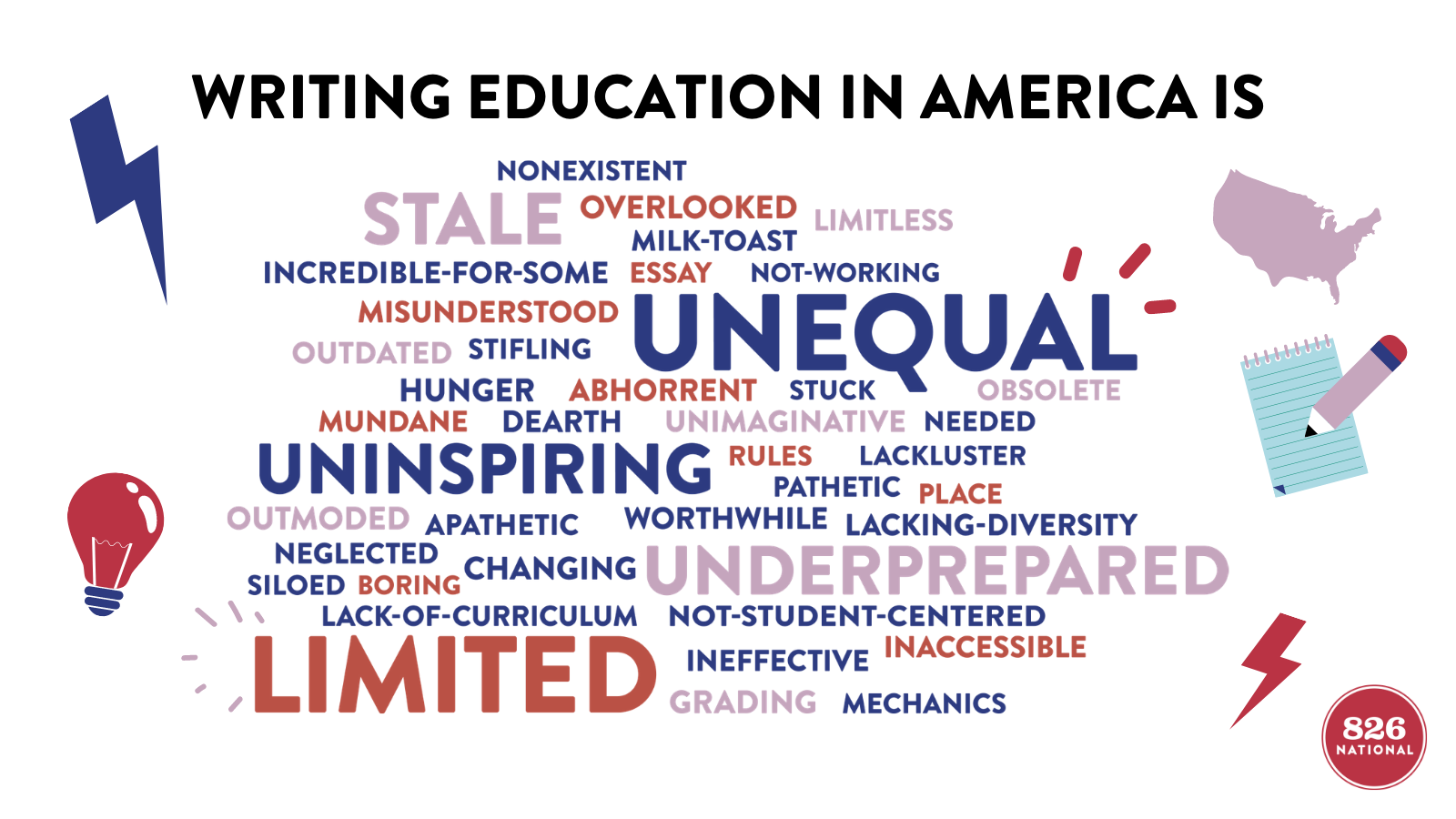
In our new report “The Truth About Writing Education in America: Let’s Write, Make Things Right,” 826 National set out to understand the barriers to effective and accessible writing instruction for American students. While writing and the freedom it provides is an incredible and essential tool for self-expression and learning, access to quality writing instruction in the United States is not equal. Three out of four twelfth grade students and nine out of ten Black and Hispanic twelfth grade students are not writing at grade level proficiency. Not only has the field been underfunded for years, but research on the state of writing education in this country is woefully behind. To be frank: writing education in America is broken.
Here is a summary of our newest report on where this instruction falls short and how we can start bridging gaps for students across the country.

Equal access to quality writing education has been a longstanding challenge in the United States and not enough has been done to move the field forward in recent years. In this report, we at 826 National aim to bring writing education to the forefront of public, policy, and funding conversations by examining its current state and issuing a call to action to the field. In the summer and fall of 2020, we interviewed 19 writing education experts, including authors, researchers, and educators, about the current state of writing education in the United States. We distill their reflections on the benefits, challenges, and inequities of writing education, and then draw on those reflections to outline recommendations for the field. Our experts were universal in their dismay about the current state of writing instruction, which they saw, with the exception of a few bright spots, as formulaic and constrictive.
Our experts collectively identified three key challenges.
- Time and priority: Writing should be at the center of instruction, reinforcing subjects like reading and STEM, but instead it has been pushed to the fringes.
- Yesterday’s classroom: Limits in traditional writing spaces. Curricula, teaching methodologies, and assessment practices are outdated and don’t put students and their diverse backgrounds at the center.
- Teacher training: Teachers receive little specialized support on writing instruction and have too few opportunities to explore their own identities as writers.
We put forward four recommendations which policymakers and practitioners can follow to strengthen writing education.
- Redefine the classroom: Encourage and support students to continue writing anywhere, anytime, on anything, and with any platform.
- Reunite reading and writing: Make the relationship between reading and writing explicit through discussion, examples, and publishing student work. And start early.
- Identify teachers as writers: Establish communities of practice for teachers to learn, share, and grow as writers.
- Level the playing field: Invest in the writing education of those who need it most, who don’t have the same level of access to high-quality educational opportunities.
We conclude with our understanding of 826’s role in advancing the above recommendations. We are part of a complex system, and while we do not presume to solve these problems alone, we have a part to play. This report is the first in a series to come, which will continually examine the state of writing education by presenting the research and work being done in the field. And, we will share our best practices, what we’ve learned and are continuing to learn, working together to amplify the voices of young people and writing advocates. Collectively, we will demonstrate the power of writing and the potential of writing instruction, which is needed now more than ever. In a time that finds us all separated from our loved ones and fighting for our democracy, writing offers an avenue for communication, advancement, advocacy, and, when needed, escape.
Here’s what you can do to help us enact positive change in the field of writing education:
- Educators: Download curriculum at 826Digital.com
- Writers: Share the white paper and get involved in your community.
- Funders: Improve writing education in America by investing in 826 National’s writing movement.
- Students: Get involved and share your writing with us for a chance to be published in one of our upcoming book projects.
To learn more about critical issues that affect our nation’s young writers, read our full report “The Truth About Writing Education in America: Let’s Write, Make Things Right.”
